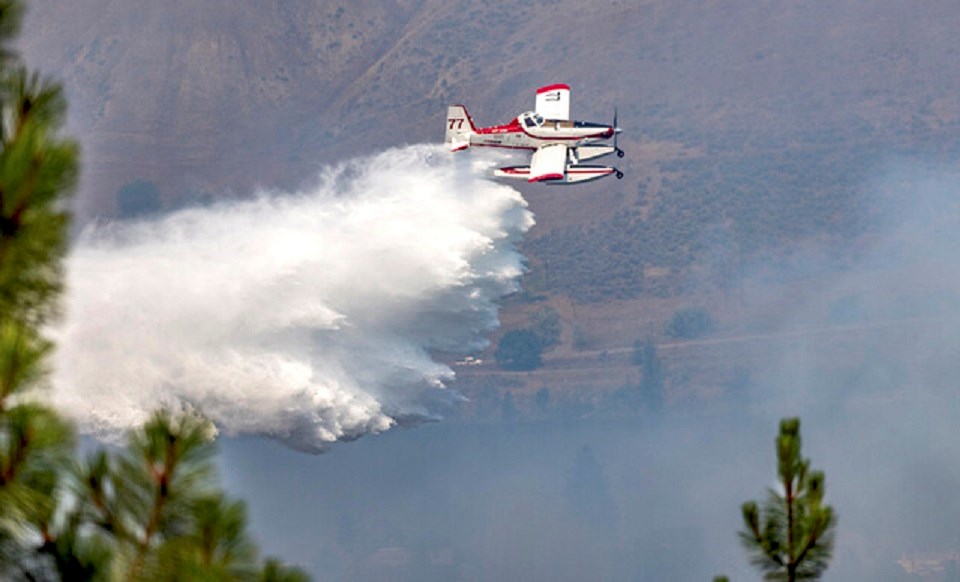The province is not expecting to see as extreme a wildfire season as last year, but there is still the potential for large fires, especially in the northeast and the Central Interior.
“Continue to be vigilant and know that the province is doing everything we can to be prepared for another challenging fire season,” Matt McDonald, the BC Wildfire Service's lead fire weather forecaster, said during a news conference on Wednesday afternoon.
McDonald, as well as Forests Minister Bruce Ralston and Emergency Management and Climate Readiness Minister Bowinn Ma provided an update for the summer's seasonal wildfire outlook on Wednesday.
McDonald said 2024 could still be another challenging wildfire season for sa国际传媒 due to persistent drought, lack of snow and remaining holdover fires that, given a bit of warm weather and wind, can exhibit aggressive fire behaviour.
Far fewer hectares burned
McDonald noted a key difference between last year’s record breaking 2.8 million hectares of burned land fire season and 2024, indicting it will not be as extensive.
Last year at this time, sa国际传媒 was approaching the one million hectares mark, but only about 300,000 hectares have burned so far this year, having benefitted from rainfall.
“But inevitably we will be upticking with continued [fire] activity into into July and August,” he said.
He said the northeast corner of the province stretching down to the Vanderhoof area is at the highest risk for large, challenging to fight, wildfires given drought conditions that have persisted since 2022.
McDonald said that while there was widespread drought in the province last year, it is confined to smaller regions this year.
More than 100 active fires
As of Wednesday, there are 108 wildfires burning across sa国际传媒, most of which are in the Prince George Fire Centre, Ralston said.
“The wildfire season is well underway in British Columbia,” he said. “Unfortunately, an unseasonably warm winter means the rain and snow we were hoping for just didn’t happen in many parts of the province.”
Ralston said that while the recent rain experienced in the province has helped conditions, parts of the province are still poised for a challenging wildfire season.
“It’s important that everyone continues to remain alert as conditions are expected to become warmer and drier throughout June and into July,” he said.
Ma said the average snowpack level in the province remains at 57 per cent of normal.
Three key factors to predicting wildfire season
McDonald said when anticipating the duration and intensity of a fire season they look at three things — drought, snowpack and rain, which has provided some relief in portions of the province in May and June to date.
He said there’s not been much help from spring runoff keeping fire fuels in sa国际传媒’s forests from drying out due to a lower than normal snowpack.
However, he said, cool temperatures in May has kept alpine areas covered in snow and shielded from lightning strikes to date.
McDonald said more than 60 per cent of sa国际传媒’s wildfires are caused by lightning. McDonald said there has been fewer than normal human-caused wildfires to date as well.
He said in there’s a strong probability of above normal temperatures in late June and into July in sa国际传媒
“We have seen some rain, we have seen some cool temperatures, but that’s expected to shift, so we can all anticipate increasing fir hazard here and we approach he core of the summer,” McDonald said.



